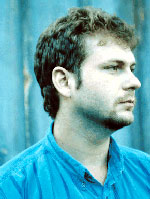 Just yesterday I was reading several articles referenced in Claus Moser's "kartentisch" blog, and to follow up on that post, today I see that fellow surveyor Roger Hart's "Geocarta" blog is carrying some info shedding new skepticism on that remarkable Chinese map of the world.
Just yesterday I was reading several articles referenced in Claus Moser's "kartentisch" blog, and to follow up on that post, today I see that fellow surveyor Roger Hart's "Geocarta" blog is carrying some info shedding new skepticism on that remarkable Chinese map of the world.
Per Geocarta, I went to Interfax China, which is carrying an article stating that Mao Peiqi, history professor at Renmin University is pointing out several inconsistencies about the map, suggesting that a contemporary Chinese mapmaker of 1763 would never have prepared a map showing some of the erroneous features of Chinese geography that are carried on this map. He goes as far as to suggest that the map is a modern forgery, probably made in the last 20 years.
Mao Peiqi further stated at the Beijing press conference, "We hope others see China as a great nation, but we won't use forgeries to demonstrate it. We want evidence."
It will be interesting to see how the ongoing radiocarbon dating unfolds.
Technorati tags:
atlas, cartography, China, evidence, geo, Geography, history, map, mapping, maps, navigation, news




Yes, the whole thing sounds rather dubious. There's been a rather heated debate on the MapHist mailing list as well, with most listers vehemently refuting Liu's and Menzies' claims. A couple of Chinese scholars have also been quoted, mostly those from the skeptical side of the fence.
I'm also looking forward to the radiocarbon dating but I doubt whether this will bring any substantial proof to the debate. Best we'll know then is that the map may really be from 1763, but what about the presumed original?